#record rainfall
Text
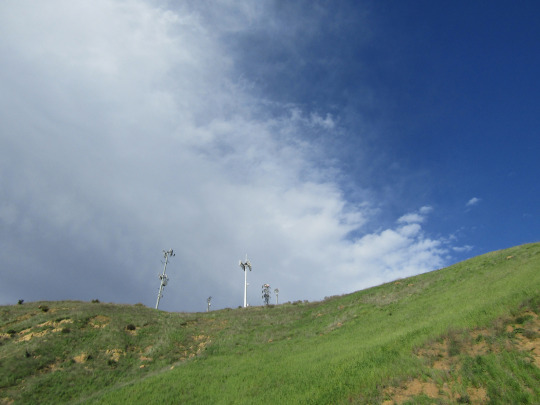
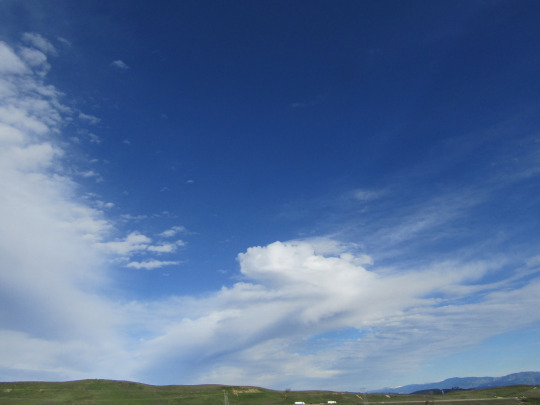



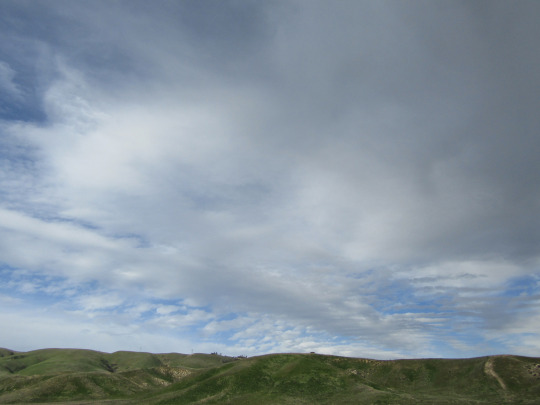
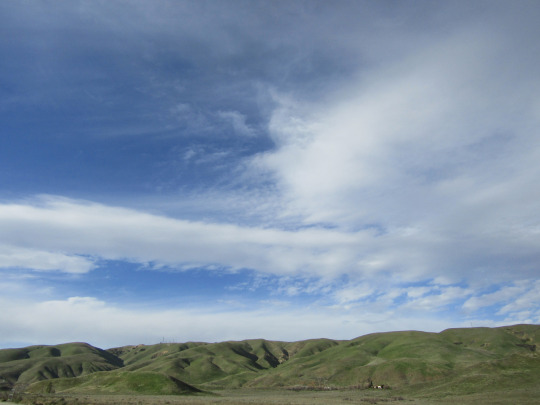
A Clearly Malfunctioning Cell Tower Array
Feb. 23, 2024
#orgone#orgone energy#orgonite#weather#climate#california#santa clarita#gorman#green hills#mountains#grapevine#rain#record rainfall#planetary healing#geo-restoration#at&t#at&t outage#free energy#clouds#cell tower
7 notes
·
View notes
Text

The past eight years were the eight warmest years on record, and 2022 was the fifth-warmest on record globally, according to the European Union's Copernicus Climate Change Service.
Why It Matters: The ranking, released Tuesday morning, shows the planet continues its long-term warming trend in response to growing amounts of greenhouse gases.
• Each of the past 8 years had global average temperatures more than 1°C above the preindustrial level, as the world nears the 1.5°C guardrail established by the Paris Climate Agreement.
• Studies show that the odds of potentially catastrophic climate impacts increase significantly if warming exceeds 1.5°C compared to preindustrial levels.
Of Note: The third year in a row of La Niña conditions in the tropical Pacific Ocean helped depress global average surface temperatures slightly, keeping 2022 from hitting the top three warmest years.
• There are signs, however, that La Niña may soon wane, and potentially give way to an El Niño event during 2023.
• If this were to happen, it would raise the chances for a new all-time record warm year.
The Big Picture: Global average temperatures in 2022 were 0.3°C (0.54°F) above the 1991-2020 baseline, and the year was the second-warmest on record for Europe, behind 2020.
• Europe had its hottest summer on record, accentuated by all-time record high temperatures set in several countries, including the United Kingdom.
• The UK Met Office has found 2022 was its warmest year on record dating all the way to 1659. It was also its first year with an average temperature above 10°C (50°F). France also had its hottest year.
• Areas that saw their warmest year on record include large parts of western Europe, the Middle East, Central Asia and China, northwestern Africa and the Horn of Africa, among others, Copernicus found.
• Worldwide, extreme heat struck Pakistan and northern India during the spring before devastating flooding rains hit the region in late summer. Central and eastern China saw record hot and dry conditions for an extended period over the summer.
Between The Lines: Studies tied these and other extreme weather and climate events to human-driven climate change.
• Research published in September found that climate change may have increased five-day rainfall amounts in the hardest-hit areas of Pakistan by up to 50%.
• Another climate attribution study found that the U.K. heat wave, which peaked in mid-July, was at least 10 times more likely to occur in today's warmer climate compared to the preindustrial era.
Of Note: There were a fair share of precipitation extremes in 2022 as well, with the floods in Pakistan, extreme drought in the Horn of Africa that is pushing that region into a famine, and a series of record floods in Australia.
What's Next: Annual numbers are expected later this week from NOAA and NASA.
#news#axios#2023#2022#climate reform#climate emergency#climate crisis#climate change#global warming#droughts#record rainfall#record heatwaves#world news#world politics#Copernicus Climate Change Service#european union#greenhouse gases#Paris Climate Agreement#La Niña#El Niño#UK Met Office#europe#asia#africa#middle east#floods#noaa#nasa
15 notes
·
View notes
Text
Antigua's Record-Breaking February Rainfall: A Meteorological Marvel
By Dale C. S. Destin – Published 09 February 2024 |
February has brought unprecedented rainfall records to Antigua this week. The downpours witnessed were nothing short of historic, shattering previous records and leaving a significant mark in the meteorological books.
Flooded Road in Golden Grove, Thursday 8 February 2024. Image source: ABSTV. Accessed via:…

View On WordPress
0 notes
Text

Via NWS Las Vegas -- 📣DEATH VALLEY RECORD ALERT
Yesterday (August 20, 2023), Death Valley National Park observed 2.20" of precipitation at the official gauge near Furnace Creek.
This breaks the previous all time wettest day record of 1.70", which was set on August 5, 2022.
#CAwx#CAwx #DeathValley#DeathValley
#Death Valley National Park#NWS Las Vegas#National Weather Service#Weather.gov#Weather.gov/LasVegas#Record Rainfall#Furnace Creek Las Vegas
0 notes
Text
The perfect storm had been building for some time. Ferguson is at the bottom of the income spectrum and has acted as a sort of vanguard for the outward march of suburban poverty. [...] [T]he dwindling population, fleeing industry, and plummeting property values had created a budgetary crisis, forcing many of the area’s small municipalities to rely less on their shrinking tax base and more on extra-tax fees and fines, enforced by the police and facilitated by the city’s arcane court system.
The result was that Ferguson and similar suburbs existed in what the Huffington Post called “a totalizing police regime beyond any of Kafka’s ghastliest nightmares.” Out of a population of roughly 21,000, over 16,000 Ferguson residents had arrest warrants issued. And this number only counts individuals with warrants, not the total number of warrants. In 2013 this figure was a staggering 35,975, roughly 1.5 warrants per person in the city.
These warrants were part of a complex racket designed to impose unrelenting fines on the poor population in order to fund the city government, which itself had largely been redesigned to facilitate this predatory practice.
In 2013 fines, court fees, and other such extortions accounted for some 20 percent of the city’s budget. These fines were disproportionately applied to the city’s black residents, with black drivers twice as likely to be stopped, searched, and arrested as their white counterparts. [...]
---
These funding systems are not unique to St Louis, but instead became a national trend as more and more municipalities found themselves in dire conditions after the last crisis. The suburbanization of poverty and skyrocketing incarceration rates have thus been paired with growth in these massive, extra-tax extortions applied to the poor -- and particularly the suburban and rural poor, who are more likely to live in small, cash-strapped municipalities (or counties) with a dwindling tax base and less access to federal aid. In most places, this takes the form of an expanding net of legal search, supervision, and harassment that essentially extends the walls of the prison out into the new suburban ghetto.
Increasingly expensive incarceration is gradually replaced by a predatory probation system composed of extra-carceral monitoring, fines, and seizure of property, all amplified by the fusion of public budgets and for-profit probation companies.
Many of these are relatively recent trends, with Ferguson’s dependence on probation funding skyrocketing after 2010. But rather than an unfortunate exception, Ferguson is a window into the future. As low growth, deepening crisis, and general austerity continue [...] [t]hese cities will be forced to find new sources of funding, and the easiest way to do this is for better-off residents to utilize existing legal resources in order to prey on the poor.
As the economic situation becomes increasingly dire, similar patterns emerge at greater scales: the county, the state, and the federal government will all turn to such predatory practices, facilitated by growing armies of police and preexisting legal mechanisms for debt collection, surveillance, and incarceration.
---
These patterns are piloted in the poorest areas, applied first to the most disadvantaged social groups. In Anaheim, California, the poorer, predominantly Latino neighborhoods in the city have seen a series of gang injunctions, allowing plainclothes police to arrest and open fire on residents for things as simple as their clothing color or gathering in a crowd. In 2012 a sequence of police shootings in the city led to nights of rioting just outside D!sneyl@nd. In the poorer parts of New York, stop and frisk policies and the enforcement of laws against minor offences (such as selling loose cigarettes) have allowed for similar practices, resulting in local riots around the killing of Kimani Gray in Flatbush in 2013 and national riots around the killing of Eric Garner in 2014. Similar practices have long been applied to the rural poor, including the black residents of regions such as the Mississippi River Delta, Native residents of reservations such as Pine Ridge, Latino farmworkers across the country, and the white poor in places like the coal-mining towns of Appalachia.
-------
Text by: Phil Neel. Hinterland: America’s New Landscape of Class and Conflict. 2018. [Bold emphasis and some paragraph breaks/contractions added by me.]
1K notes
·
View notes
Text
I WANT to write this weekend but I live in California and we have the last of our big ol' storms coming this weekend but I've got my fingers crossed my power/internet stays on 😭😭
#my small town has gotten national covereage because of the rainfall and damages its wild#🌲 — off record.
8 notes
·
View notes
Text
It's finally raining again after so long and there's thunder and lightning and honestly the universe is so so sexy for it
#i would share ELO's Standing in the Rain instead but honestly it's not the tone were going for tn#rn*#Spotify#though that song does have that very nice thunder and lightning thing going on in the background#and the violins mimicking rainfall? so so good#lmao dont they also have a song called Thunder and Lightning on the same record?#wait not it's Summer and Lightning#many good rainy songs either wat#way*
2 notes
·
View notes
Text

PÚCA - Of Rot and Rainfall
#PÚCA#Of Rot and Rainfall#Moonworshipper Records#cassette#tape#black metal#raw black metal#blackened punk#lord bill
3 notes
·
View notes
Text
Had to puzzle out a way to work this morning to get around roads that were either a) flooded or b) obstructed by tree limbs. The entire experience was less than enjoyable and solidified my need to leave so early I arrive at work a half-hour before shift starts, as that was the only thing that kept me from being late.
#at least the water's receded now so I could get home without difficulty#not a great way to wake up#yay record setting rainfall
2 notes
·
View notes
Text
Weather Update: झारखंड में अब तक 38 प्रतिशत कम हुई मानसून की बारिश
Ranchi: झारखंड में अभी भी मानसून की बारिश में भारी कमी है। अब तक 38 फीसदी कम बारिश दर्ज हुई है। राज्य में एक जून से लेकर चार जुलाई तक 147.2 मिमी बारिश हुई है, जो कि सामान्य बारिश 236.1 मिमी के मुकाबले 38 फीसदी कम है।
मौसम विभाग के अनुसार नार्दर्न लिमिट ऑफ मानसून टर्फ फिलहाल गंगानगर, दिल्ली, अलीगढ़, हमीरपुर, प्रयागराज, डाल्टनगंज, बालासोर से दक्षिण दिशा होते हुए बंगाल की खाड़ी तक जा रहा है। इससे…

View On WordPress
#38 per cent less rainfall has been recorded.#Jharkhand is still severely deficient in monsoon rains. So far#JharkhandNews
0 notes
Text

Disruptive storm to produce life-threatening flooding, intense winds and snow in the West
Feb. 4, 2024 - Accuweather
An intense and impactful storm has begun to move onshore in California, ushering in rounds of soaking rainfall and mountain snow that is expected to persist through at least midweek...
The expansive reach of this storm will mean potential impacts for at least five western states, with California expected to bear the brunt of the wind, rain and snow...
AccuWeather Senior Director of Forecasting Operations Dan DePodwin stated, “Roughly 94% of California’s population, up to 37 million people, is at risk for life-threatening flooding...
The first ever hurricane-force wind warning was issued for the state of California early Sunday morning, covering a corridor south of the San Francisco Bay area. Hurricane-force winds are categorized as winds exceeding 74 mph...
The majority of the state will have a chance at collecting at least 1-2 inches of rain from Saturday night to Tuesday, but a large portion of southwestern to north-central regions can observe between 2-4 inches of rain. Locations surrounding the Los Angeles basin, the Central California coast and upslope regions west of the Sierra Nevada range could pick up 4-8 inches of rain...
As moisture continues to expand across the higher terrain of the Sierra Nevada and mountains surrounding the Los Angeles basin through Monday night, forecasters say that between 3-6 feet of snow can occur in places above 7,000 feet...
Read entire article
#orgone#orgone energy#orgonite#weather#rain#snow#winter#winter weather#sierras#los angeles#mountains#flooding#record rainfall#geo-restoration#rain storm#california
7 notes
·
View notes
Text
All the time travelers are hiding out on February 29th, 1900: The day that didn't exist.
See, 1896 was a leap year. 1904 was a leap year. But 1900 wasn't, because the rule for leap years isn't "every 4 years" but "every 4 years, except every 100 years, except except every 400 years".
So 1900 wasn't a leap year. A lot of people at the time didn't know that, and they wrote down the date as 02/29/1900... the US government still has the weather records to prove it. We have recorded temperatures and rainfall on a day that didn't happen.
But if you need to find a time traveler, that's when they're hiding.
4K notes
·
View notes
Text
The Wettest February in Nearly 100 Years
By Dale C. S. Destin – Published 14 March 2024 |
Weather-wise, it was a weird but welcome February. The October-like weather for the month has never been seen on record dating back to 1928, nearly 100 years.
Typically known for its dryness, the island-average rainfall for February 2024 of 178.3 mm (7.02 in) shattered the previous record for the month of 130.8 mm (5.15 in) by nearly 50.8 mm (2.0…

View On WordPress
#Antigua Weather#Caribbean Weather#Drought#Excessive Rainfall#February 2024#Record-breaking Rainfall
1 note
·
View note
Photo

What You Need to Know About Rain Broke Records in Australia?
Australia experienced rain broke records in Australia that caused flooding and landslides. Some areas received their highest rainfall in over 50 years. The flooding of kati thanda-lake eyre was another result of the Australian spring flooding in 2022. Read this entire article to learn everything about the record rainfall in australia.
#Rain Broke Records in Australia#Record rainfall in Australia#flooding in Australia#Entegra Signature Structures
0 notes
Text
St Louis is where storms collide.
Without the moderating effect of a coastline or major mountain range, cold air sweeps unopposed down from the Arctic to meet a warm, humid front marching north from the Gulf of Mexico. The two finally lock in combat over the Mississippi flatlands, emptying their arsenals to barrage the area with blizzards, thunderstorms, and tornados. In recent years, growing climate chaos has only intensified this ambient war, each “extreme weather event” more volatile and less predictable. And as the air currents grapple over the middleAmerican sky, the storm-swollen Mississippi grinds forward below. Once-uncommon “freak floods” are now standard, the levees overcome every few years and large chunks of St Louis and its surrounding suburbs washed away by the intractable inertia of a river bound to outlive any city.
The result is another slow apocalypse.
In January 2016, people from the surrounding suburbs poured into Red Cross shelters, unable to return to homes torn apart by the rising water. But even with such disasters gradually becoming the new, more violent equilibrium, federal aid is perpetually insufficient. [...] Politics in these conditions can only appear apolitical, as all functional organizing is given political significance when confronted with devastation of such scale: Baptists and Mennonites organizing supply caravans through the wreckage of long-decayed postwar suburbs, the crosses emblazoned on their white vans floating above silt-clogged cul-de-sacs.
Such stories of environmental destruction are, however, only one dimension of a much-deeper global economic catastrophe that takes different forms in different regions.
-------
In many ways, St Louis is a city without a region, stuck between the Midwest, the South, and the Great Plains -- and as such it seems to act as a sort of vaguely generalizable image of a mythic middle America slowly being lost. Economically, it’s an intersection between Rust Belt and Corn Belt, only barely outside the new sunbelt yet falling short of its river-port counterparts. It was one of the many cities left behind by the wave of deindustrialization. After its postwar heyday, the entire metro area saw massive population loss, at first concentrated downtown but soon spreading out to neighboring suburbs as well. This process only deepened long-standing racial divides. Meanwhile, attempts to resuscitate the city by focusing on capital-intensive manufacturing and biotech have only ensured a further cloistering of wealth and a hardening of racial divides between neighborhoods.
Today postwar houses and small clusters of low-rise apartment complexes are sprinkled out across the humid floodplain. When the river overspills its levees, entire suburban cities can be washed away, as was the case in the small, predominantly white working-class suburb of West Alton in 2016. Wedged between the Missouri and Mississippi, just before their confluence north of St Louis proper, the entire city was evacuated, with a quarter to a third of the population expected never to return. [...]
There are small islands of gentrification within the city proper, as well as the remains of more affluent suburbs, largely west of the city -- the foremost of these being small municipalities like Town and Country, a largely white golf course suburb that boasts the highest median income of any city in Missouri. These richer locales are buffered by a spectrum of poorer ones [...].
In St Louis, these divergent dynamics are colliding, and the city is being reshaped according to this economic battle, itself only an echo of that greater chaos foreboded by warring storms.
-------
Phil Neel. Hinterland: America’s New Landscape of Class and Conflict. 2018.
58 notes
·
View notes
Text
Exploring the Different Types of Weather Forecasts: A Comprehensive Guide
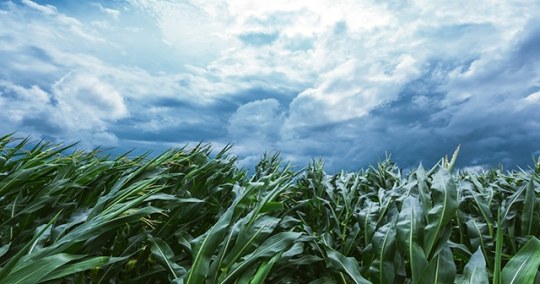
Weather forecasting is crucial in our daily lives, helping us plan everything from our weekend activities to major agricultural and energy decisions. Various types of weather forecasts are available, each designed to meet different needs. In this article, we'll explore some of the different types of weather forecasts and their applications.
Ag Weather Forecasts
Agriculture is one of the most weather-dependent industries, making ag weather forecasts crucial for farmers, ranchers, and other agricultural professionals. Ag weather forecasts help farmers plan planting and harvesting schedules, irrigation, and fertilizer application, among other things. These forecasts provide detailed information about temperature, precipitation, and wind speeds, which are critical for crop growth and yield.
Energy Weather Forecasts
Energy weather forecasts are designed to help energy companies and utilities plan for changes in demand and supply caused by weather conditions. These forecasts are particularly important for renewable energy sources, like solar and wind power, as they depend heavily on weather conditions.
Energy weather forecast can help energy companies anticipate and prepare for events such as heat waves, cold snaps, and storms, affecting energy demand and supply. They can also provide information about temperature, wind speeds, and cloud cover, which is critical for planning and maintaining wind and solar farms.
Frost Forecasts
Frost can cause significant damage to crops, making frost forecasts essential for farmers and other agricultural professionals. Frost forecasts provide information about temperature and dew point, which are critical for predicting the formation of frost.
These forecasts can help farmers take preventive measures to protect their crops from frost damage, such as using frost blankets or sprinklers. They can also help farmers decide when to harvest crops, as early harvest can be a preventive measure against frost damage.
Other Types of Weather Forecasts
There are various other types of weather forecasts available, each designed to meet specific needs. Some of these include:
Short-term forecasts: These forecasts provide information about weather conditions over the next few hours or days and are typically used for planning daily activities.
Medium-range forecasts: These forecasts provide information about weather conditions over the next few days to a week and are often used for planning outdoor events and travel.
Long-range forecasts: These forecasts offer details on the weather throughout the upcoming weeks and months and are typically used for agricultural and energy planning.
Severe weather forecasts: These forecasts provide information about severe weather conditions such as thunderstorms, tornadoes, and hurricanes, helping people prepare for these events and stay safe.
The Final Thought
Weather forecasting is a complex process that requires a range of data sources and analysis techniques. As a result, there are various types of weather forecast for energy available, each designed to meet different needs. Just like Ag weather forecasts are crucial for farmers and other agricultural professionals, energy weather forecasts are essential for energy companies and utilities, and frost forecasts are critical for protecting crops from frost damage. For such professional weather forecast services, refer to AWIS Weather Services. You can also visit their website- Awis.com, for detailed information.
#weather analytics#energy weather#construction weather#rainfall data#hourly weather data#weather records#climate data online#historical rain data#historical weather report
0 notes